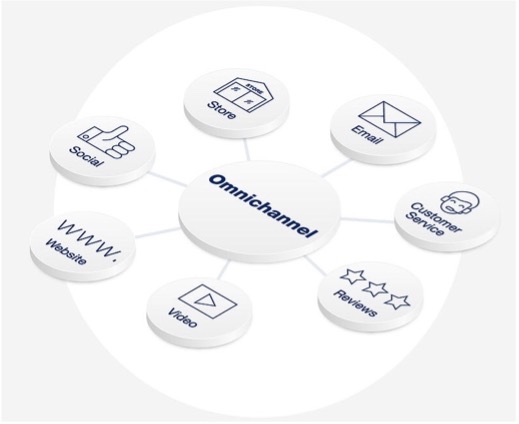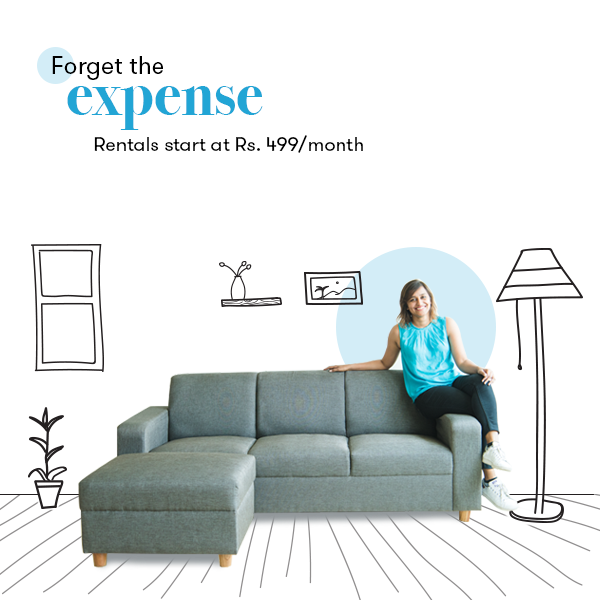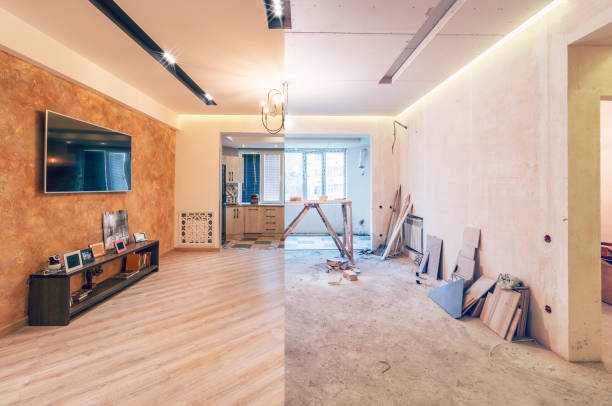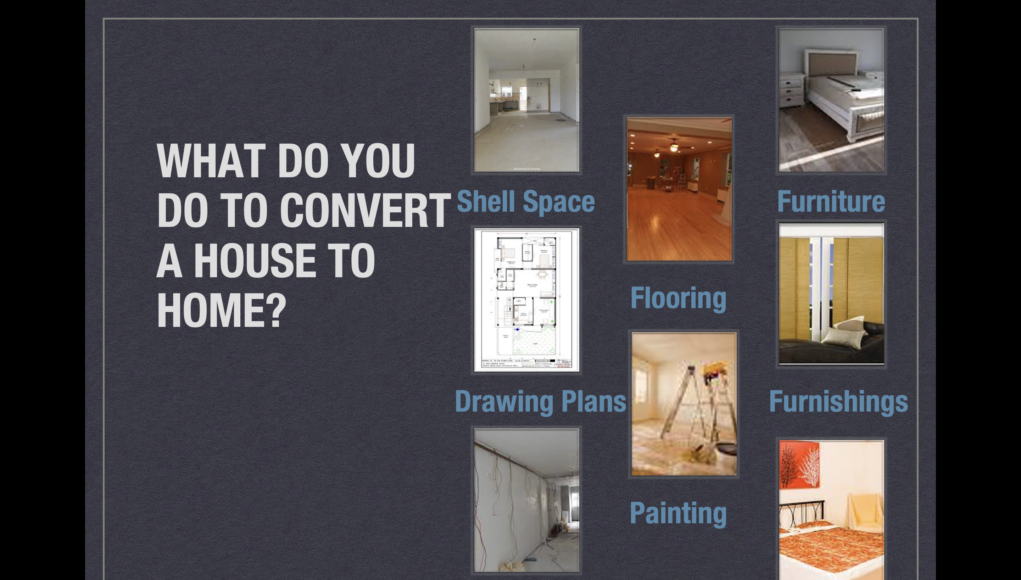How are new businesses trying to disrupt the current market place with innovations? How have internet first startups evolved in this largely fragmented distribution network? Are there new models to look out for in the near future?
New Models
eCommerce, omnichannel, furniture renting, white glove delivery, makeover solutions are segments where new models have been experimented with.
While we explored eCommerce as a part of the earlier article (Part II of this series) we will briefly try to understand how the other new ideas deliver value to their customers.
Omnichannel

The internet first brands have realised that in big-ticket purchase categories where brand standardisation is virtually absent, a physical presence gives the customer security and builds credibility to the online presence. Hence they have taken steps of putting up stores in key locations to build the brand presence.
On the other hand brick and mortar furniture shops have set up e-commerce sites, but use them to drive traffic to the stores. Today the first two steps of the AIDA purchasing process is fungible between scouring online and visiting marketplaces.
Imagesource: freepik
The solution is hence not to have token presence either online or offline but build a credible omnichannel network where customers get the advantages of both online shopping as well as the choice of visiting a physical store. Pepper Fry, an Indian furniture startup, through its Pepper Fry Studio has exactly tried doing that.
Ultimately, the omnichannel experience will further drive personalization and transform social channels into extensions of furniture web-shops whereby an audience can collectively discover and discuss brands and the products they offer.
Furniture Renting

The global demand for commercial furniture rental is increasing due to significant growth of the service sector in the region. Transformation and generation of startup ecosystem in countries such as India, China, Malaysia, Singapore, Indonesia, Bangladesh South Africa, Estonia, Lithuania, Latvia and Brazil, rapid urbanization, growth of the hospitality industry, rise in gross tourist turnout have fuelled the growth of the rental furniture market.
Within the residential furniture rental market, Asia Pacific region is witnessing an accelerated rate of construction related activities to address the demands of the constantly rising urban population. Rapid urbanization in developing countries is coherently responsible for the growth of the global residential furniture rental market over the forecast period.
Image source: Furlenco
| Rental Market | 2018 Sales | 2025 Sales | Growth by 2025 | Asia Pacific | Europe |
|---|---|---|---|---|---|
| USD Mn | USD Mn | CAGR % | Share % | Share% | |
| Commercial | 13066.55 | 33861.19 | 14.89% | 47.33% | 26.45% |
| Residential | 7787.92 | 16844.48 | 11.75% | 53.14% |
India’s rental furniture and appliance market, has players like RentoMojo, Furlenco, Rentickle, and CityFurnish, is now worth USD 4.5 billion, with top 20 cities accounting for 55% of the total addressable market, as per data from management consultancy Redseer. Indian furniture rental startups can serve 14 million households, with a monthly average order value of Rs 1,900 (~ USD 25). The average rental duration is usually 13 months. The limitation is that these companies are concentrated in the top 10 cities.
Renting furniture will grow significantly in the near future. This fits bachelors, students and short-term migrants. This works primarily through marketing, references and positive reviews. Most users tend to come back again and again to rent furniture. Probably identifying cities with a large student base or seasonal migration and building a network there might help.
White Glove Delivery

When a local retailer delivers large-sized furniture, the component of transportation, last-mile movement in high rise apartments, assembling, fixing minor scratches and training in case of technology products is taken care of by the retailer, but all these become challenging and costly for online companies as their delivery could be across a large geography. Getting expertise across all locations is nigh impossible and here organisations with skilled manpower and the logistics might add value to the whole online purchase.
White Glove delivery organisations like Craters & Freighters or JB Hunt are able to do this as an extension of their current delivery network. Startup in these spaces like Ziptized has focussed more on last-mile small deliveries and customised and time-bound services.
Image source: Rehabmart.com
Makeover Solutions

This space has seen multiple options from being a social media plus advisory to consultancy plus execution business.
Examples include the O-House App of South Korea, founded in 2013, which uses Pinterest kind of format to explore design and look options and an eCommerce shopping option like Wayfair. Startups like Houzz and Livspace, founded in 2014, provide advisory plus executing the home portfolio with contract services.
These startups are trying to combine the services of a designer and contractor rolled into one to deliver home interiors and renovation. An average customer cannot afford or does not perceive any value of ideas given by interior designers. Customers many a time use these contractors to reduce their need to interact with workers and sourcing of raw materials. But this service works fine in turnkey projects and not for a one off purchase.
Image source: istockphoto
Startups
- Hem – Started as fab.com in 2014, out of Stockholm, and retails its own brand of furniture. They have scaled up to retail across Europe and North America. They also sell through other retailers in select countries like ANZ and South Korea.
- Pepperfry – Launched in 2011, Pepperfry is synonymous with digital furniture sales in the country & adopts a hybrid aggregator-based model wherein the firm allows for manufacturers to list on the portal and also sells a hoard of private lable products.
- Secret Lab – Is a specialised online retailer of gaming chairs. Launched in 2014 out of Singapore, this is an aficionado startup with limited volume but high priced products.
- Miliboo – It is one of the earliest in the furniture space, started in 2007 in France. Controls the whole value chain from design to delivery and installation.
- O-House – Founded in 2013 in South Korea, it started as a consumer aid in solving furniture problems by providing access to ideas and solutions using images. They added shopping to the design ideas, and today, it is a mobile app that has become a community idea sourcing platform and a one-click shopping marketplace.
- Fernish – Located in Los Angeles, this is one of the early startups in furniture rentals. It offers both rental and outright buy options for residential and office furniture.
- Furniture Roots – Founded in 2018, the company’s only customer base is in the B2B segment that consists largely of hotels, restaurants, pub complex’s, offices, cafes and importers of furniture abroad.
- Livspace – Launched in 2015, it is focused on interior design and renovation of a ready to move in home.
- Furlenco – Founded in 2012, Furlenco is at the forefront to ride the trend of a growing interest in rentals fuelled by millennials & a growing trend of temporary inter-state migration for employment opportunities.
Challenges for these startups
- Customer visualisation of furniture on e-commerce sites limited their purchases to one off items, but not the whole story. By story I mean the full home portfolio as a single purchase.
- Furniture buying is not a repeat buying category. This requires e-commerce sites to acquire a large base of new customers every time.
- Indians haven’t yet adapted to the culture of DIY, because of cheap and local labour availability to execute most of the jobs at home. This meant that flat-packed items wouldn’t work. The job of assembling was for the e-commerce player who had to train the delivery staff, which meant that the delivery processes couldn’t be completely outsourced.
- Furniture is a bulk item. Hence shipping without damages and installation is a huge challenge. Returns in e-commerce is around 25% as compared to 8% over e-commerce sites. If you include cost of packaging and shipping and return, in furniture a single return of a bulk item wiped out margins from the next 3 sales.
- In the marketplace model of Pepperfry, returns were to be sent back to the seller, and there were huge conflicts with them. In Urban Ladder, another Indian furniture startup, the returned inventory had to be stored and repaired, which added to both the storage space cost as well as manpower to recover the damaged piece.
- Furniture e-commerce needed the setup of a whole supply-chain which needed huge upfront investments in warehousing and transportation.
- The time taken from order placement to fulfilment ranged from 2-4 weeks. This was a huge hurdle for buyers. You could get your furniture within a day from the local market.
- Livspace needs customers to trust the consultants. Scaling up consultancy services is the toughest as it involves getting skilled and trained people for every interaction. Attrition amongst these kinds of trained consultants is high as each one of them aspires to open their own business.
- The furniture renting segment has a small base. Hence the cost of a company to hold inventory to suit every choice of furniture has a huge upfront inventory cost. This deters investments in furniture renting startups.
Conclusion
The furniture category is a classically ideal industry to disrupt. It is unorganised, fragmented, lacks scale and standardisation. E-commerce could have been an ideal disruptor, and startups should have flourished. But as stated earlier the unique challenges of this industry makes it a very challenging business model.
For the startups to succeed they will need to build a much stronger reason for customers to shop from them instead of the high streets. Some of the drivers for consumers to choose the new startups over the current furniture shopping model would be;
- If a strong brand builds an omnichannel capability and penetrates across distant geographies. Ikea is already the best known omnichannel furniture brand.
- Aggregator for many brands like Ufurnish.
- B2B business with specialised product features.
- Branded products like mattresses, pillows.
- Unique merchandise like antiques.
- Visual search – home placement feel.
- Customisation – with a visual preview before actual execution.
- Disrupt cost of design and expertise – Home stratosphere.
From the current startups, none would be at investment grade now. Either one of these startups will have to pivot to a more visual search and hence increase traction many times over to generate adequate ROI or find a completely new reason for customers to pay a premium for their services.
Disclosure- Rahul is an early-stage investor in a furniture startup called Victus Retail Private Limited.
For more extensive analysis and Market Intelligence reports feel free to approach us or visit our website: Venture Capital Market Intelligence Reports | VCBay.
We try our best to fact check and bring the best, well-researched and non-plagiarized content to you. Please let us know
-if there are any discrepancies in any of our published stories,
-how we can improve,
-what stories you would like us to cover and what information you are looking for, in the comments section below or through our contact form! We look forward to your feedback and thank you for stopping by!
Next Article


































[…] Furniture Startups […]